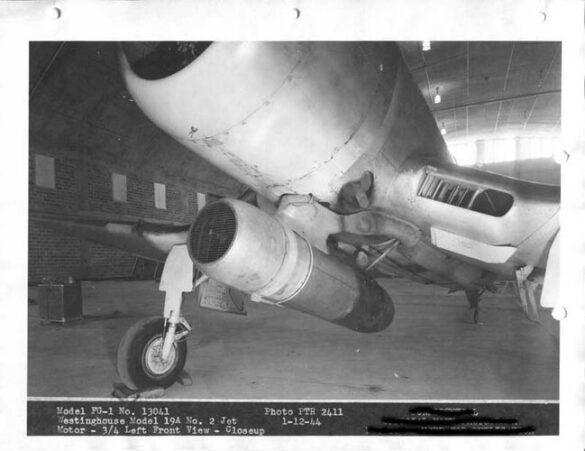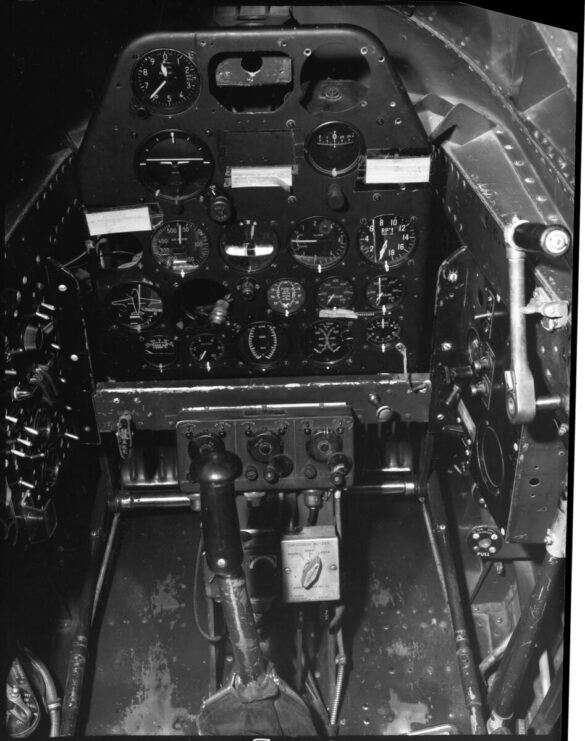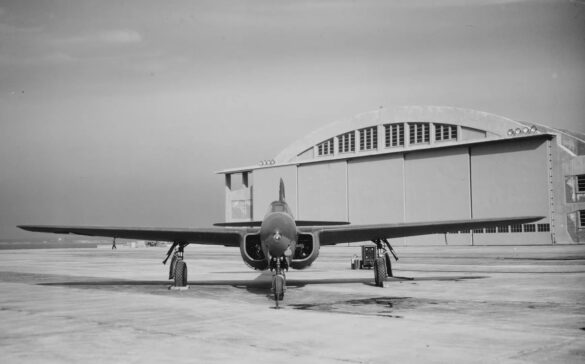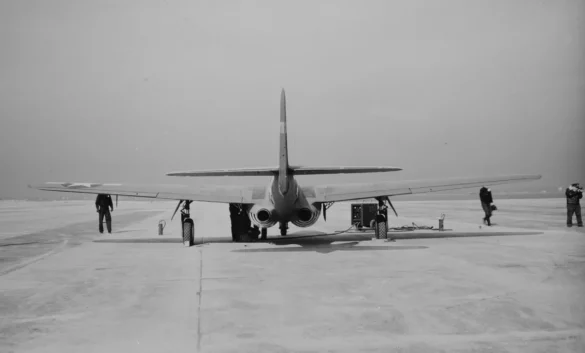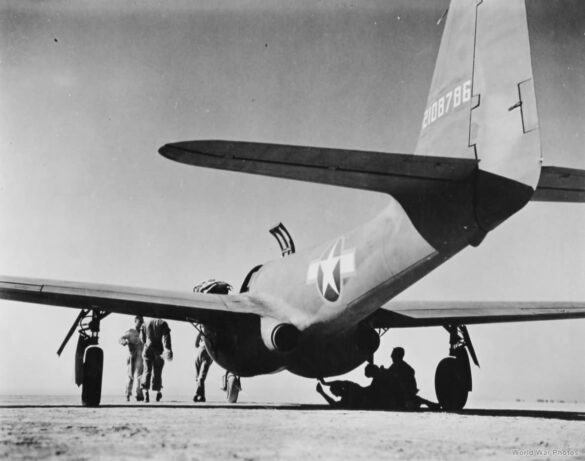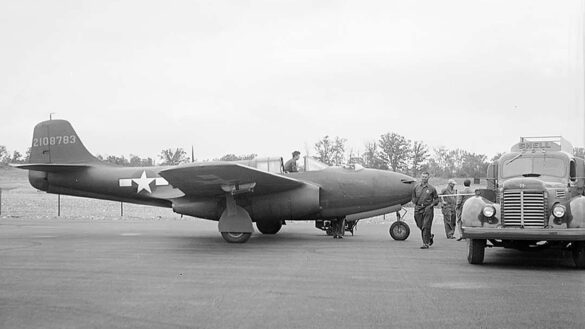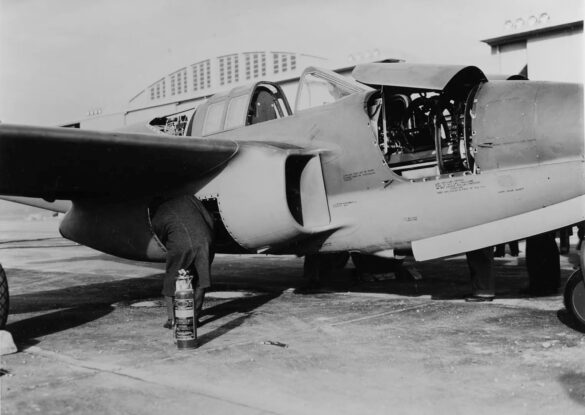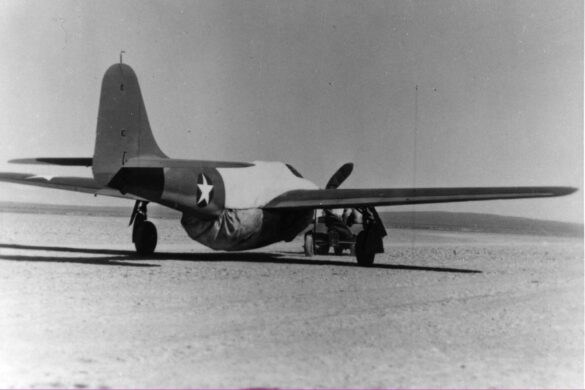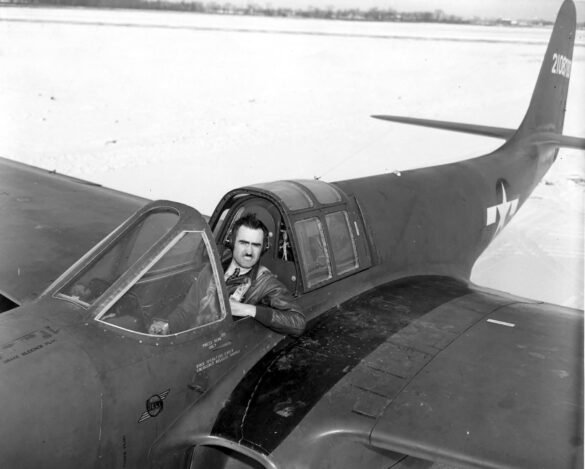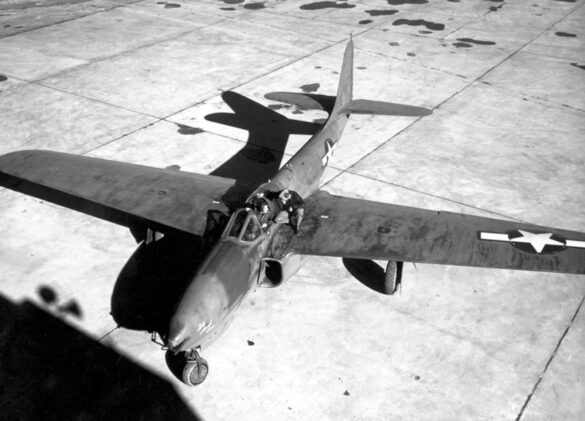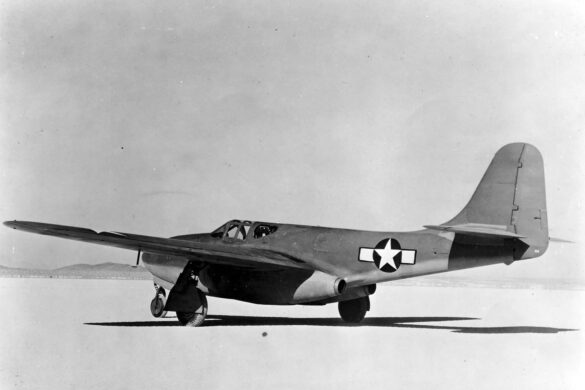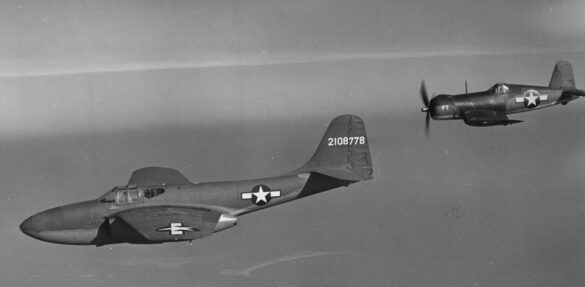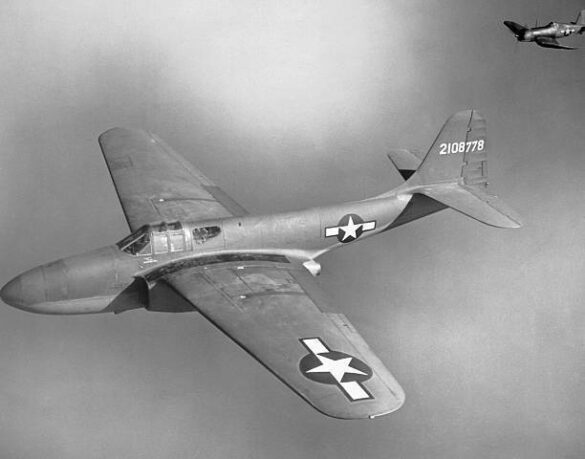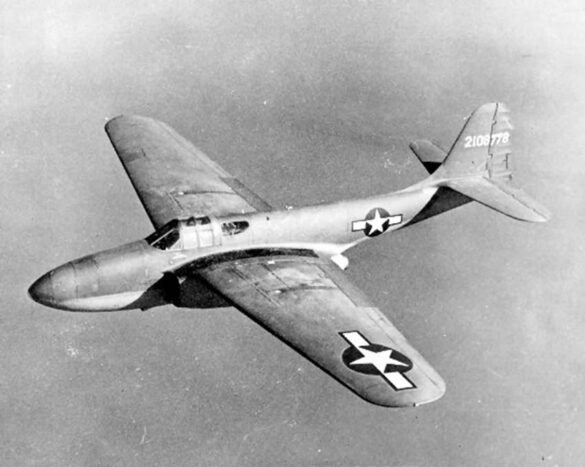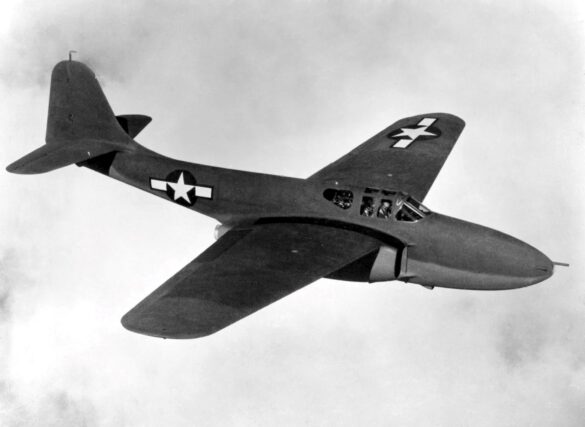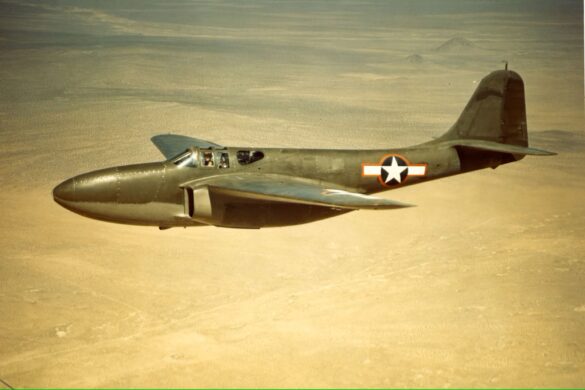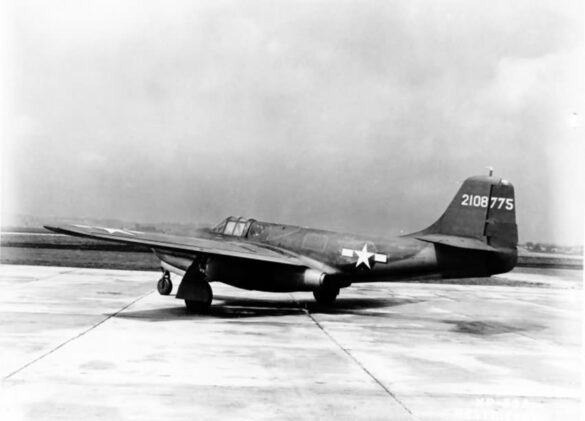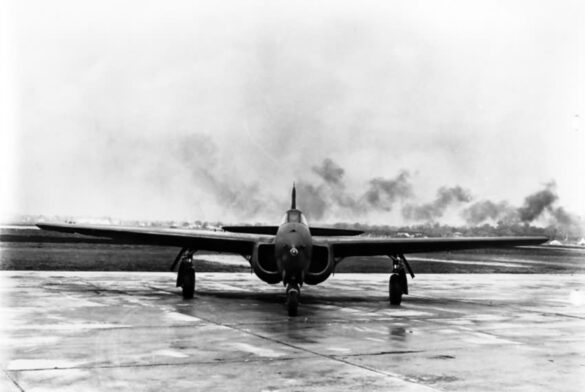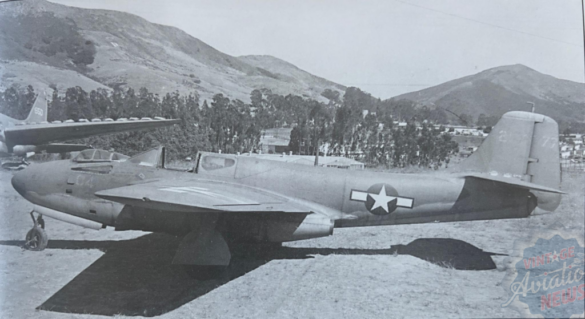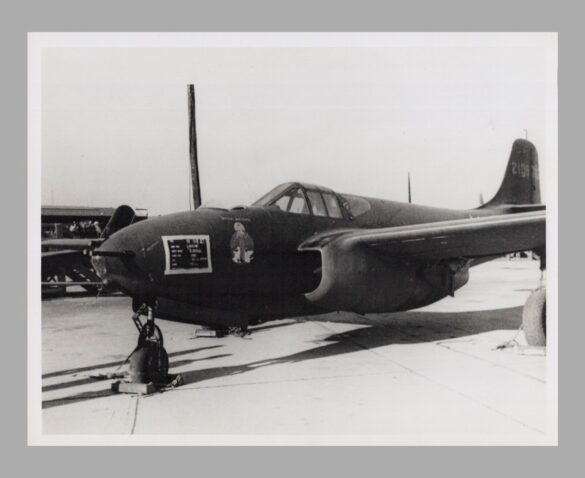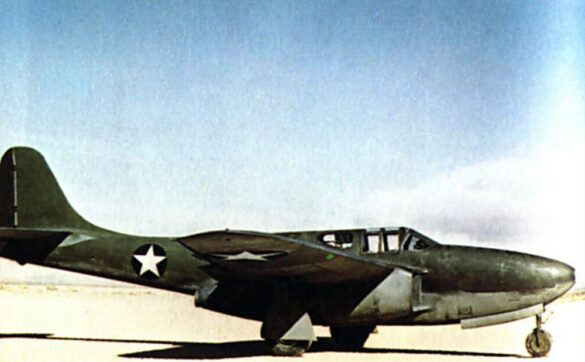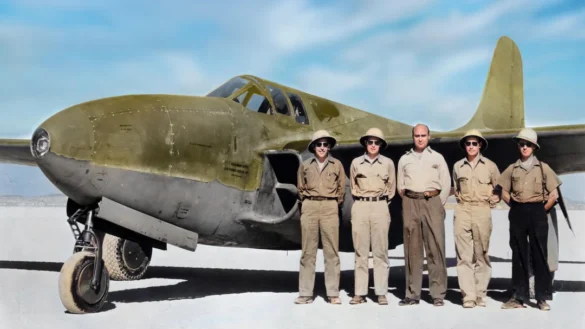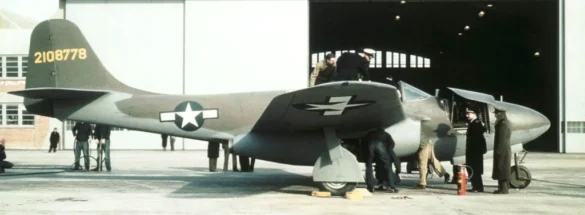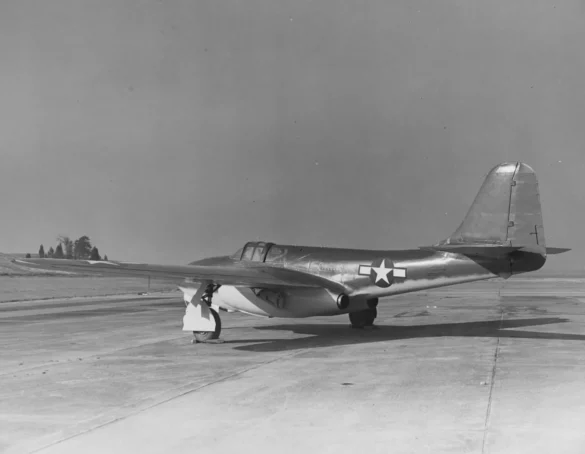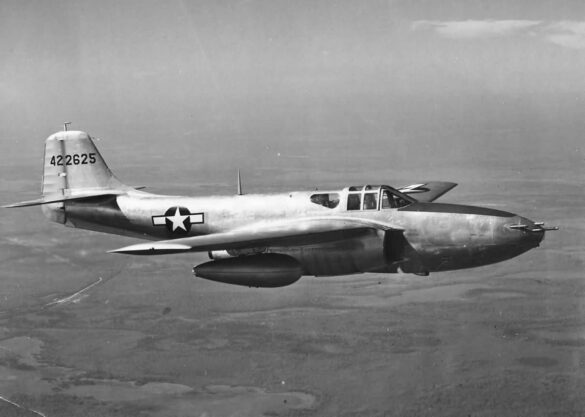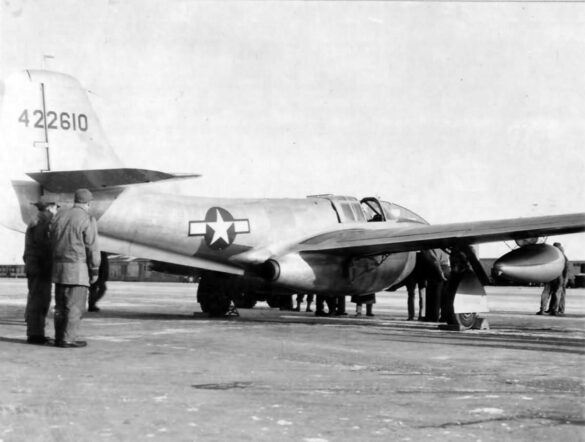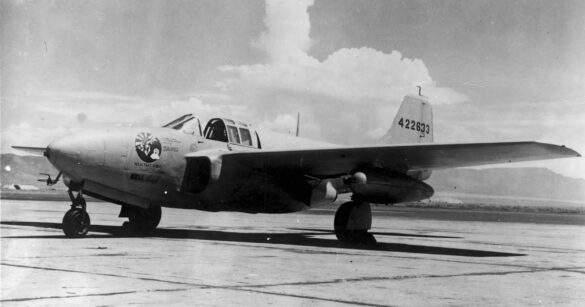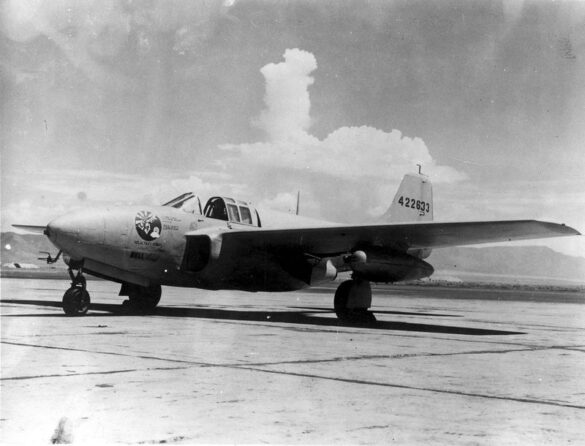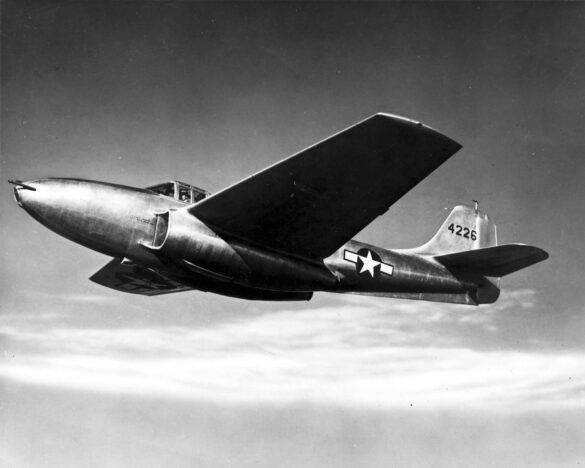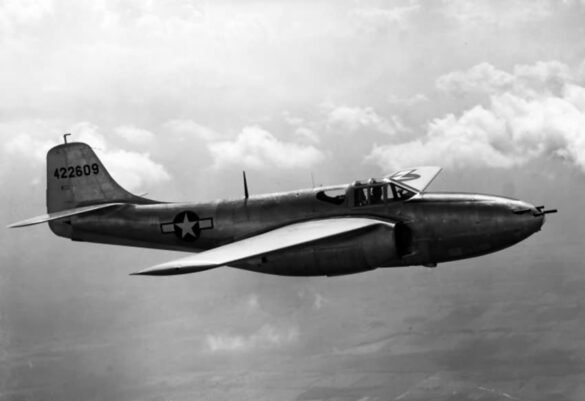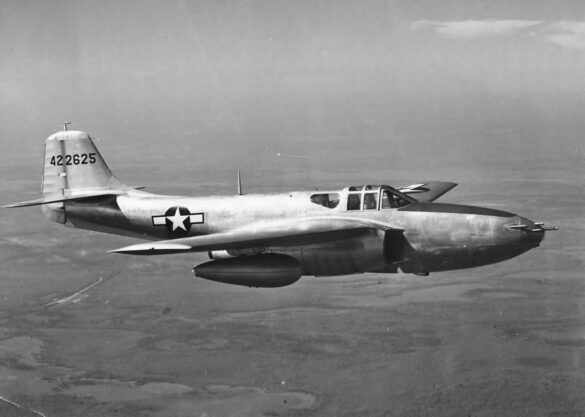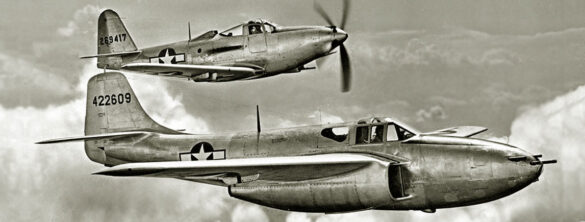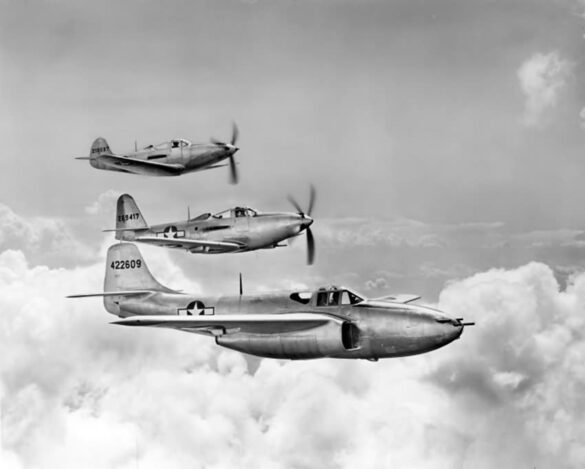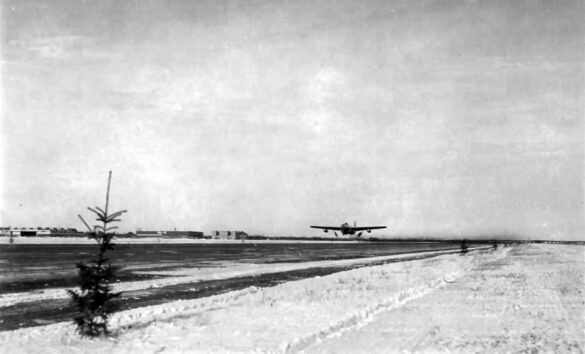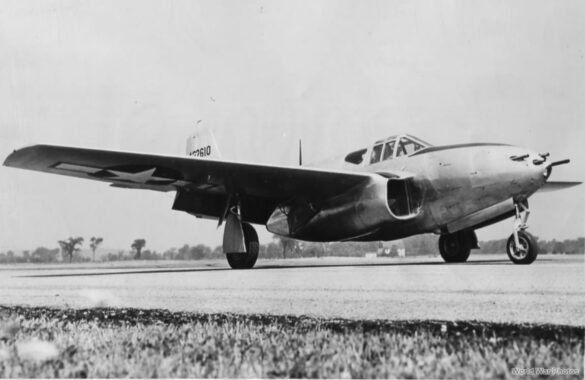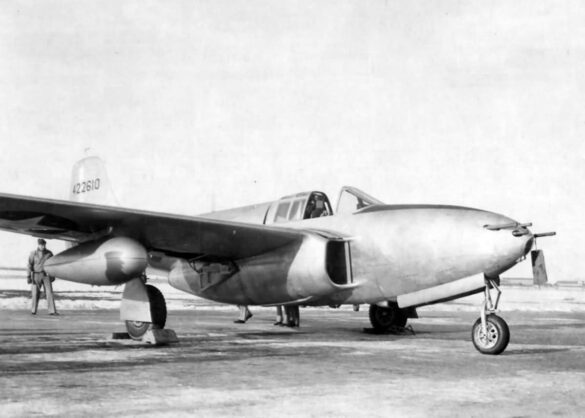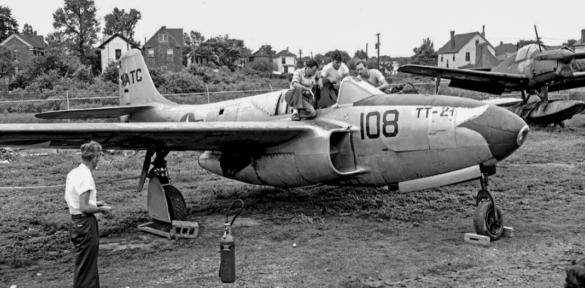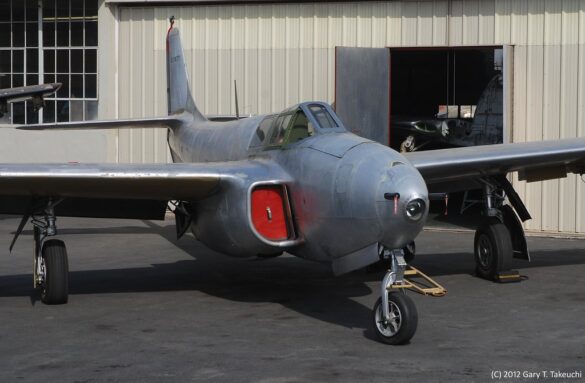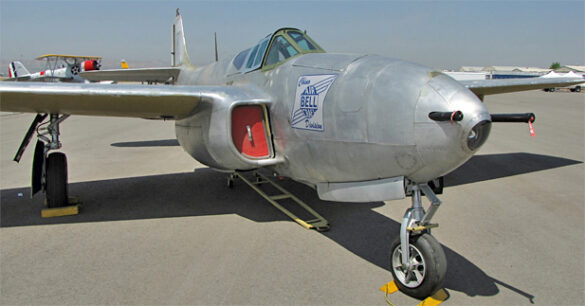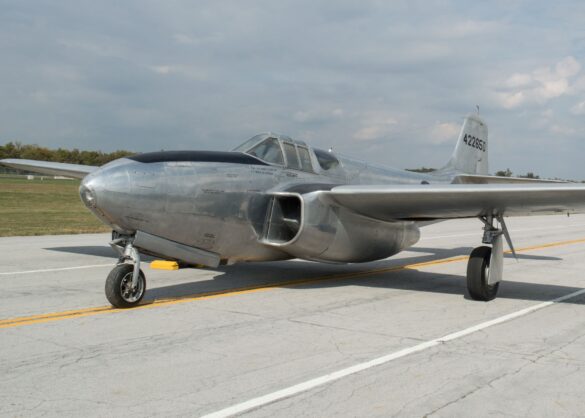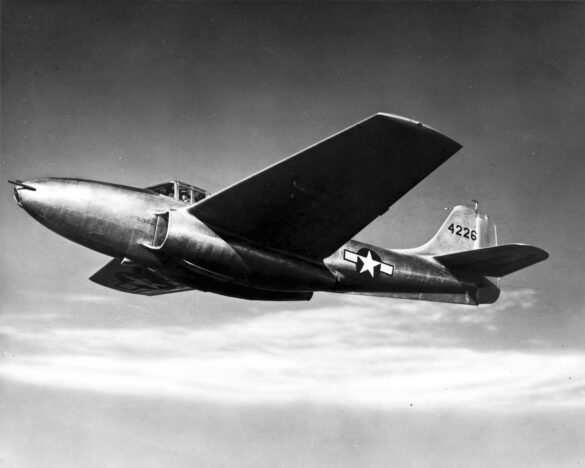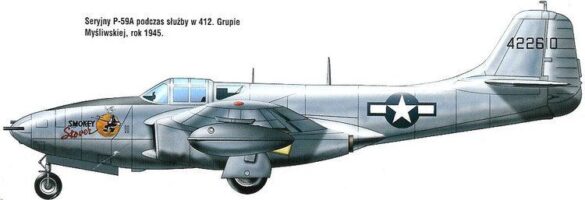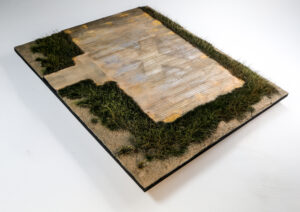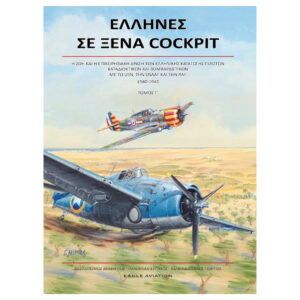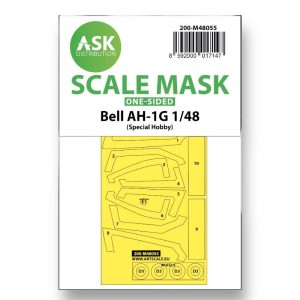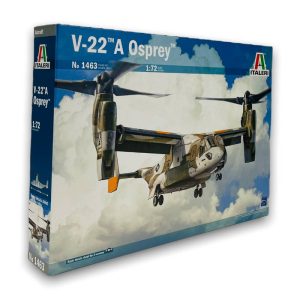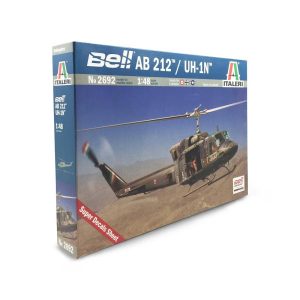article
Bell P-59 Airacomet
The Bell P-59 Airacomet (US Navy designation: YF2L-1) was a twin-engine jet fighter, the first for the USAAF, designed and built by Bell Aircraft during World War II.
Bell Aircraft was one of the companies asked to investigate the development of jet fighter aircraft, a technology that had taken the United States by surprise. While Britain, Germany, and Italy were already moving forward with jet aircraft projects, the United States was lagging behind. Impressed by the potential of jet engines, General “Hap” Arnold, the Chief of the United States Army Air Forces (USAAF), requested the British jet engine designs for license-built production in the United States. Given the support provided through Lend-Lease, the British government agreed to share the technology.
Westinghouse built its engine from scratch without outside help due to the secrecy imposed. It featured an axial-flow compressor, which was the future, instead of the centrifugal compressor used in the Whittle engine, a dead end in terms of significantly increasing thrust. The original Yankee engine, with a diameter of only 19 inches, performed well enough to show that the configuration was sound. One was flown under an FG-1 Corsair at NATC Patuxent River, beginning in January 1944.
A company that did not even know what a jet engine was (Westinghouse) and a company that had never developed a carrier-based aircraft (McDonnell) could have produced a fully operational fighter aircraft on the basis of the first attempt during World War II? But as more experienced engine and aircraft manufacturers became overly involved in production contracts and more conventional development programs, the Navy gave them the assignment.
The Army took the plans for the Whittle engine, which was operating in England, and gave them to General Electric. The Army then contracted Bell Aircraft, an experienced aircraft manufacturer, to design a land-based jet fighter using two of these engines. The resulting P-59 was, in every way, a dog.
Bell agreed to build three prototypes, with the first due eight months after the contract was signed on 30 September 1941. The project was given the cover designation “XP-59A” to mislead Axis intelligence into believing it was related to the unrelated XP-59 piston-engine fighter. The original XP-59 project was quietly cancelled on 1 December 1941, as work began on the new jet fighter.
The General Electric jet engine, designated IA, was depicted as a new turbofan. Bell’s conservative design featured a conventional center-mounted wing layout and retractable tricycle landing gear. It was powered by two 1,400 lb (5.12 kN) General Electric IA jet engines mounted under the wing roots. The aircraft featured a high-wing fuselage and a pressurized cockpit accessible through a side canopy. The fuselage was divided into a forward section, containing the armament compartment and cockpit, and a semi-monocoque rear section of stressed-steel construction. The control surfaces were cloth-covered and manually operated.
Although primarily an engine testbed, the XP-59A was also considered as a potential fighter aircraft, armed with two 37 mm cannons in the nose. The USAAF approved the design and construction of three prototypes on 9 January 1942. Before the first prototype flew, the USAAF ordered thirteen YP-59As for service in March 1942. These were serial numbers 42-108771 to 108783 and were powered by an improved JP-591 engine rated at 1,650 lbf (6.04 kN) thrust. The YP-59As had retractable canopies instead of the hinged ones used on the prototypes.
Total production:https:
Northrop RF-5A Freedom Fighter 97164 HAF Wreck Larissa
https://airandspace.si.edu/collection-objects/bell-xp-59a-airacomet/nasm_A19450016000
Gallery
